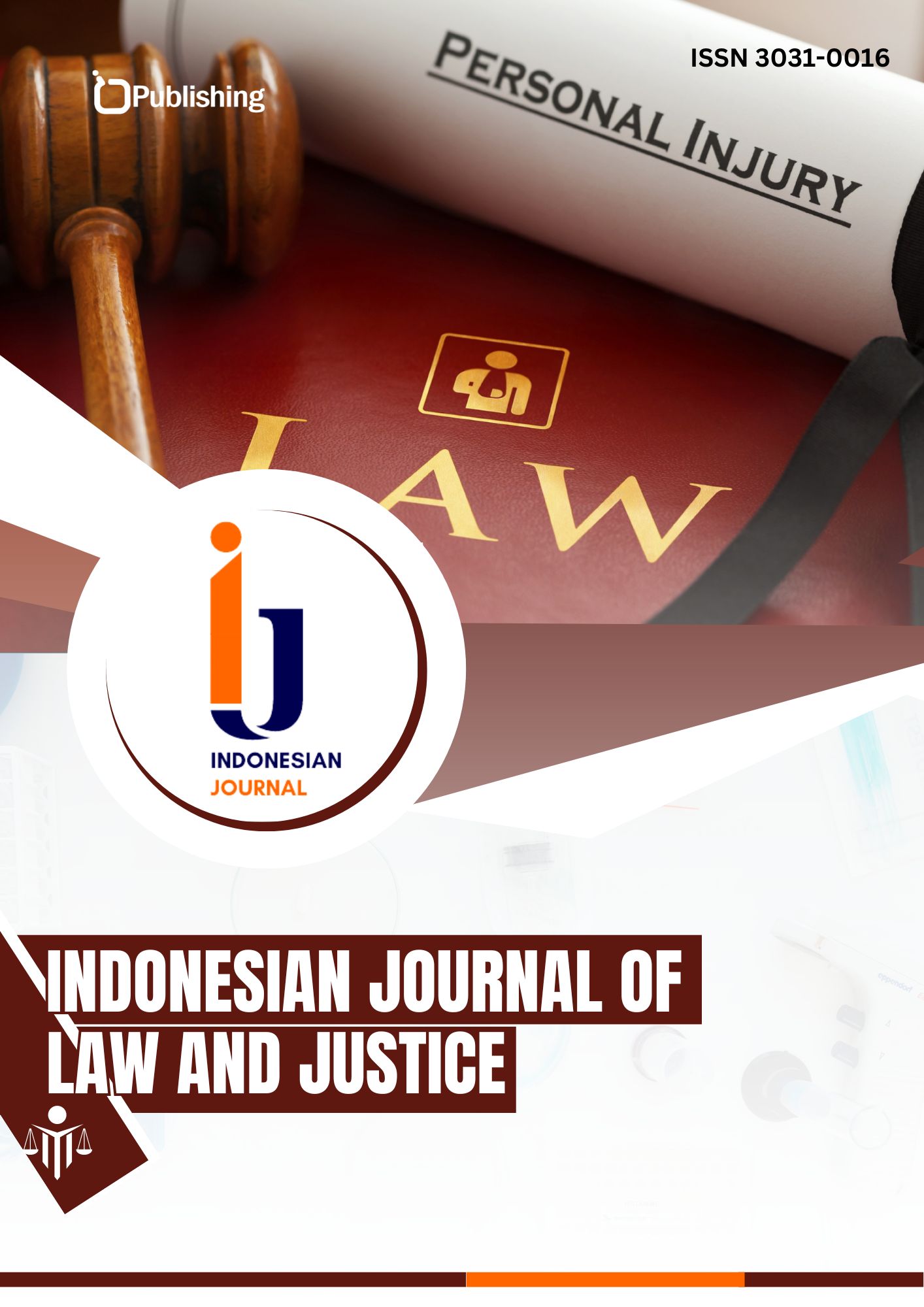Studi Komparasi antara Rumah Sakit Berbadan Hukum Yayasan dengan Rumah Sakit Berbadan Hukum Perseroan Terbatas
DOI:
https://doi.org/10.47134/ijlj.v1i4.2585Keywords:
Rumah Sakit, Misi Kemanusiaan, InstitusiAbstract
Banyak masyarakat yang berfikir bahwa rumah sakit adalah lembaga yang dibuat dengan tujuan hanya untuk menjalankan fungsi sosial dengan memberikan fasilitas kepada pasien tidak mampu/miskin, pelayanan gawat darurat tanpa uang muka, ambulan gratis, pelayanan korban bencana dan bakti sosial bagi misi kemanusiaan. Padahal pada kenyataannya saat ini banyak rumah sakit-rumah sakit yang dibangun dengan tujuan untuk mendapatkan keuntuangan. Tujuan dilakukan penulisan mengenai perbandingan rumah sakit berbadan hukum yayasan dengan rumah sakit berbadan hukum perseroan terbatas untuk memberikan pemahaman bahwa sejak diundangkan Undang-undang Nomor 28 Tahun 2004 Perubahan atas Undang-Undang Nomor 16 Tahun 2001 tentang Yayasan dan Undang-Undang Nomor 44 Tahun 2009 tentang Rumah Sakit, maka orientasi para pendiri rumah sakit dan mereka yang akan mendirikan rumah sakit mulai berubah dan perlu diketahuan perbandingan terhadap keduanya. Metode yang digunakan adalah medote penelitian kualitatif dengan metode pendekatan Yuridis Normatif. Penelitian hukum dengan pendekatan yuridis normative. Dimana dari metode penelitian tersebut menghasilkan data bahwa terdapat perbandingan rumah sakit berbadan hukum yayasan dengan rumah sakit berbadan hukum perseroan terbatas pada pengaturan struktur kepengurusan, tujuan dan fungsi pendirian, kepemilikan, sumber pendanaan, dan hukum yang mengatur.
References
Barnett, P. (2001). On a hiding to nothing? Assessing the corporate governance of hospital and health services in New Zealand 1993-1998. International Journal of Health Planning and Management, 16(2), 139–154. https://doi.org/10.1002/hpm.625 DOI: https://doi.org/10.1002/hpm.625
Blanchard, T. (1999). Private Letter Ruling 99-13-035–IRS rules the formation of a limited liability company to jointly operate a hospital will not endanger 501(c)(3) exemption status. Health Care Law Monthly, 16–21.
Fang, Y. (2020). Sensitivity of chest CT for COVID-19: Comparison to RT-PCR. Radiology, 296(2). https://doi.org/10.1148/radiol.2020200432 DOI: https://doi.org/10.1148/radiol.2020200432
Gausmann, P. (2004). Hospital risk management from the viewpoint of insurers. Zeitschrift Fur Arztliche Fortbildung Und Qualitatssicherung, 98(7), 587–591.
Herawati, E. (2017). Rumah Sakit: Pilih Yayasan Atau Perseroan Terbatas?
Hider, P. (2007). Practitioners, patients, and their visits: A description of accident and medical (A & M) clinics in New Zealand, 2001/2. New Zealand Medical Journal, 120(1254).
Houweling, P. (1996). Quality assurance in automated medical information systems. International Journal of Clinical Monitoring and Computing, 13(2), 121–123.
Huda, M. (2020). The construction of corporate waqf models for Indonesia. International Journal of Innovation, Creativity and Change, 13(6), 720–734.
Knox, R. P. (2023). Outcomes of the 340B Drug Pricing Program A Scoping Review. JAMA Health Forum, 4(11). https://doi.org/10.1001/jamahealthforum.2023.3716 DOI: https://doi.org/10.1001/jamahealthforum.2023.3716
Krüll, A. (2013). Establishing an ambulatory health-care centre (AHCC) at a university hospital. Zentralblatt Fur Chirurgie - Zeitschrift Fur Allgemeine, Viszeral- Und Gefasschirurgie, 138(1), 57–63. https://doi.org/10.1055/s-0031-1283883 DOI: https://doi.org/10.1055/s-0031-1283883
Kucera, W. (1978). Risk management. 5 alternatives to commercial insurance. Hospital Financial Management, 32(10), 26–33.
Lai, J. (2020). Factors associated with mental health outcomes among health care workers exposed to coronavirus disease 2019. JAMA Network Open, 3(3). https://doi.org/10.1001/jamanetworkopen.2020.3976 DOI: https://doi.org/10.1001/jamanetworkopen.2020.3976
Lima, L. D. De. (2019). Regional governance arrangements of the Brazilian unified national health system: Provider diversity and spacial inequality in service provision. Cadernos de Saude Publica, 35. https://doi.org/10.1590/0102-311x00094618 DOI: https://doi.org/10.1590/0102-311x00094618
Machmudin, D. D. (2003). Pengantar Ilmu Hukum. PT Refika Aditama.
Mack, M. J. (2019). Transcatheter aortic-valve replacement with a balloon-expandable valve in low-risk patients. New England Journal of Medicine, 380(18), 1695–1705. https://doi.org/10.1056/NEJMoa1814052 DOI: https://doi.org/10.1056/NEJMoa1814052
Margono, S. (2015). Badan Hukum Yayasan Dinamika Praktek, Efektivitas dan Regulasi di Indonesia (Cetakan Kesatu). Pustaka Reka Cipta.
Marimon, M. (2019). Automatic de-identification of medical texts in Spanish: The Meddocan track, corpus, guidelines, methods and evaluation of results. CEUR Workshop Proceedings, 2421, 618–638.
Murthy, P. (2019). An unusual cause for neonatal abstinence syndrome. Paediatrics and Child Health (Canada), 24(1), 12–14. https://doi.org/10.1093/pch/pxy084 DOI: https://doi.org/10.1093/pch/pxy084
Oppenheim, C. (1993). The limited liability company: an alternative business form. Health Care Law Newsletter / Weissburg and Aronson, Inc, 8(8), 7–12.
Paul, J. (2021). Privacy-Preserving Collective Learning with Homomorphic Encryption. IEEE Access, 9, 132084–132096. https://doi.org/10.1109/ACCESS.2021.3114581 DOI: https://doi.org/10.1109/ACCESS.2021.3114581
Pemerintah. (2001). Undang-Undang Nomor 16 Tahun 2001 tentang Yayasan.
Pemerintah. (2009). Undang-Undang Nomor 44 Tahun 2009 Tentang Rumah Sakit.
Pemerintah. (2010). Peraturan Menteri Kesehatan Nomor 147 Tahun 2010 tentang Perizinan Rumah Sakit.
Perlman, A. I. (2021). Medical Cannabis State and Federal Regulations: Implications for United States Health Care Entities. Mayo Clinic Proceedings, 96(10), 2671–2681. https://doi.org/10.1016/j.mayocp.2021.05.005 DOI: https://doi.org/10.1016/j.mayocp.2021.05.005
Pinori, J. (2018). Yayasan sebagai badan hukum yang bergerak dalam bidang sosial dan keagamaan menurut undang-undang nomor 28 tahun 2004. Vol 6, 10, 107–111.
Rush, B. (2019). Applying machine learning to continuously monitored physiological data. Journal of Clinical Monitoring and Computing, 33(5), 887–893. https://doi.org/10.1007/s10877-018-0219-z DOI: https://doi.org/10.1007/s10877-018-0219-z
Shi, S. (2020). Association of Cardiac Injury with Mortality in Hospitalized Patients with COVID-19 in Wuhan, China. JAMA Cardiology, 5(7), 802–810. https://doi.org/10.1001/jamacardio.2020.0950 DOI: https://doi.org/10.1001/jamacardio.2020.0950
Snyder, J. (2011). The “patient’s physician one-step removed”: The evolving roles of medical tourism facilitators. Journal of Medical Ethics, 37(9), 530–534. https://doi.org/10.1136/jme.2011.042374 DOI: https://doi.org/10.1136/jme.2011.042374
Tsutsumi, A. (2020). Workstyle reform for Japanese doctors. Environmental and Occupational Health Practice, 2(1). https://doi.org/10.1539/eohp.2020-0008-OP DOI: https://doi.org/10.1539/eohp.2020-0008-OP
Yumarni, A. (2019). Mandatory sector in appointment legal entity of Nazhir in waqf regulation and foundation regulation in Indonesia. International Journal of Scientific and Technology Research, 8(11), 1244–1246.
Downloads
Published
How to Cite
Issue
Section
License
Copyright (c) 2024 M. Suarga Nabil Akbar Ramadhan, Shanty Shanty, Indah Anggun Rahma, Dwi Bintang Alitsaputro

This work is licensed under a Creative Commons Attribution-ShareAlike 4.0 International License.










